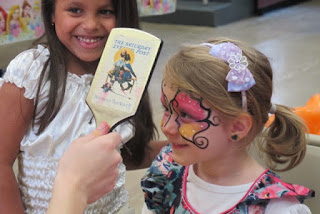It is almost natural to praise children
for their good performance, high score, or appropriate behavior. Nevertheless, we often forget to
praise steps, specific
actions, or personal challenges in daily life.
Younger children more often do something to please
parents, teachers, or friends while older children start considering their own
satisfaction from aiming for a goal.
Praise your child; nevertheless do not praise
falsely. When you applaud your child for things that aren't true achievements, she/he'll
begin to expect praise all the time, which diminishes its power.
"Overpraising a child can get her/him hooked on success and celebration
instead of being satisfied by her/his own accomplishment," says Elizabeth
Hartley-Brewer. Try to be specific about what you are praising.
Breath, one, and two-word expressions are suitable
during a tournament when there is no time for wording.
Wow!
Super!
Perfect!
Excellent!
Outstanding!
Tremendous!
Sensational!
Wonderful!
Marvelous!
Fantastic!
Good job!
Right on!
Terrific!
On a daily
base try to remember expressing what and why is something good/important.
You’re very good at drawing!
You're coloring it beautifully!
You’re eating much better today!
You’re really learning how to sow!
You’re really improving your reading!
You’re learning fast how to win that game!
You’re on the right track to finishing that quilt!
You remembered to be quiet! I really appreciate it!
You’re getting better at keeping your table organized!
I think you did it right switching the TV off before dinner!
I’m happy to see you playing with the other kids!
I couldn’t have done that sorting better myself!
I'm proud of the way you helped that lady!
It’s such a pleasure to watch you smiling!
I’ve never seen anyone rhyming better!
I'm very proud of how you hosted today.
I like when you comfort your friends!
I knew you could climb to the top!
I’m proud you tried new food!
I’m proud you didn’t cry!
That's the right way to dress!
That’s better then getting wet!
That fairy is coming along nice!
That’s a good idea to set it first!
That was first-class porcupine fish!
That's great you helped your friend!
That’s right to wash your hands first!
That’s really nice to share the blocks!
That's the best way to finish the game!
That's the way how to make a sandwich!
That's much better than losing a best friend!
That’s the best puppet show you’ve ever performed!
That was quite important to keep instruction in order!
Keep working on your poem. You're improving!
Nothing can stop you from winning that raise!
Aren't you proud of yourself when it’s done?
Now you finished with A! Congratulations!
Try one more time and you’ll have it!
Now you've figured it out yourself!
Now that’s what I call a fine job!
Now you have your hand on it!
Look at your perfect curtsy!
Keep on trying that soup!
Keep up the good work!
Great cooking!
Good tea!
Read “Praising Boys Well by Elizabeth
Read “Praising Girls Well” by Elizabeth
Printable list of praise expressions,
which you can modify as needed.



















































